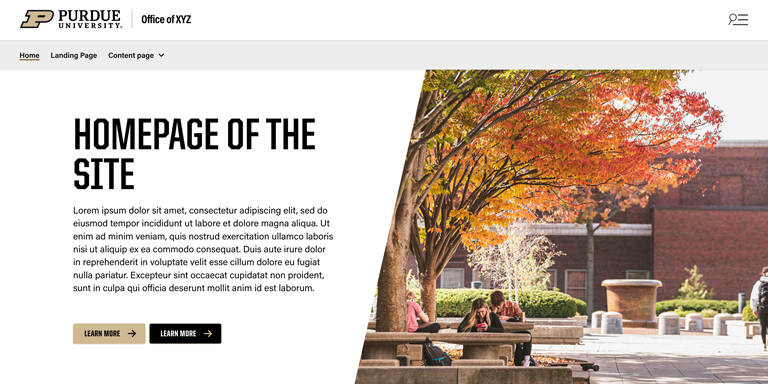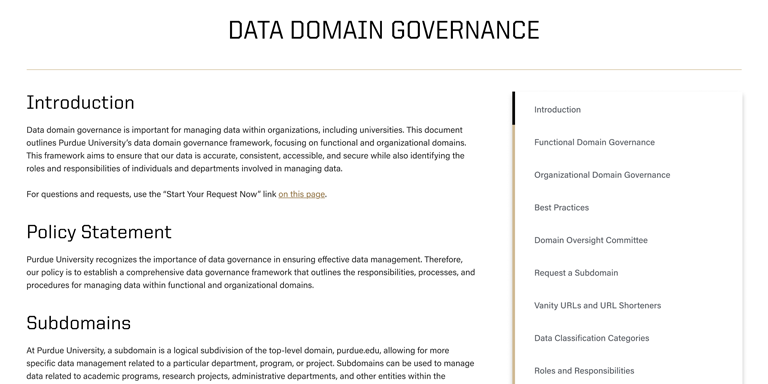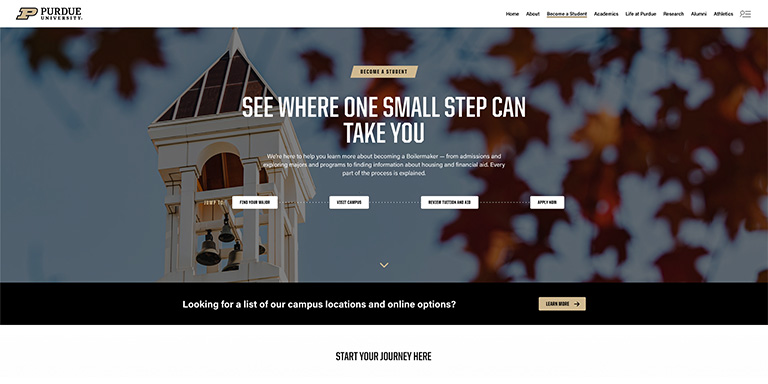Web Templates
These web templates can be used to create a framework for your Purdue website that is in brand, aligns with your organization’s goals, is accessible and is easy to navigate.
WordPress
The Purdue Marketing and Communications web development team actively supports a branded theme for websites powered by WordPress.
Branded WordPress Theme – NEW
For available blocks, style guidelines, and page templates, see Campus Partner WordPress Toolkit. The branded WordPress theme is available to all Purdue IT WordPress instances.
Existing Campus Partner Websites
Due to the extensive theme and plugin changes, we recommend setting up a new WordPress website (Purdue IT can help with this) before installing and configuring this theme.
Old Branded WordPress Theme
The Purdue Marketing and Communications web development team will continue to support the old branded WordPress theme. We recommend switching to the new theme as soon as possible. The old theme is available for download from github.com/Purdue.


Favicon
A favicon — also known as a shortcut icon, website icon, tab icon, URL icon or bookmark icon — is the little icon that browsers display next to a page’s title on a browser tab or in the address bar next to its URL. A favicon is also used when you bookmark a page. Measuring 16 x 16 pixels, it is tiny, but it can play a big part in unifying Purdue sites. See below for an example.
Download the official Purdue favicon.


